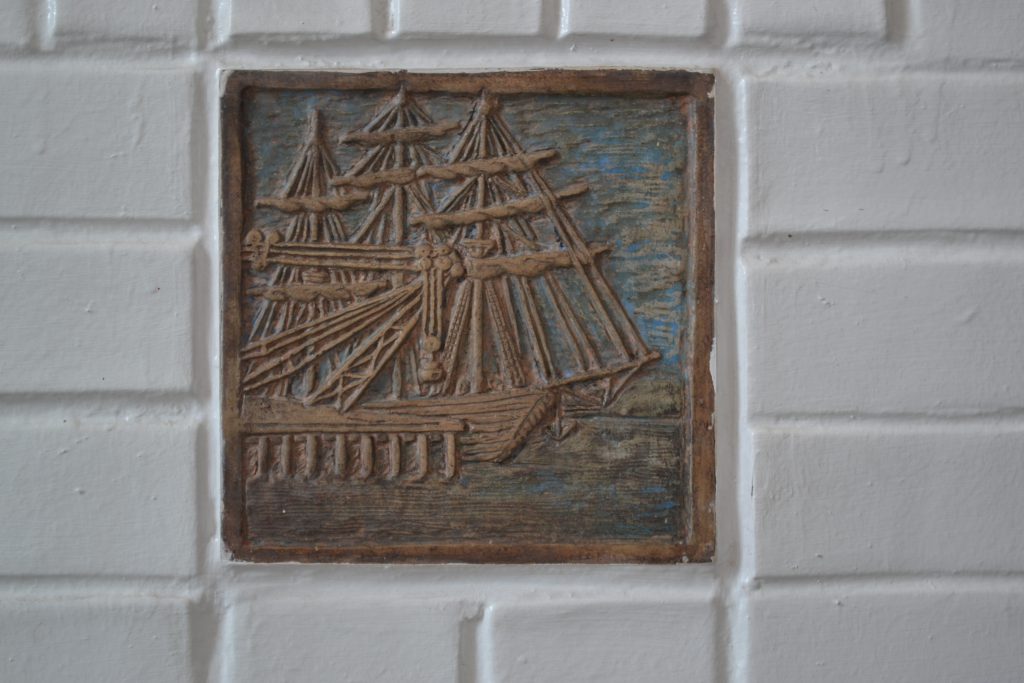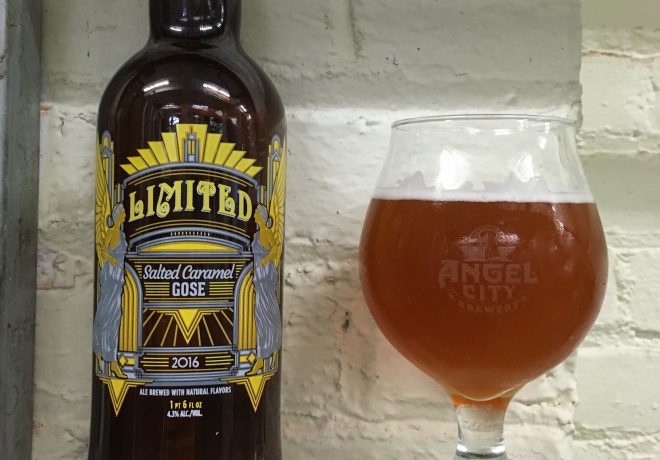(Note: The following is part of our new series we’re calling, “WTF is That?” in which we highlight some of the old, intriguing, and often strange features of our Brewery. This time, we’re talking about our historical tilework.)
Follow your map app to our address at 216 Alameda St, and it will probably drop you at the corner of Alameda and Traction, where our strange triangular lot comes to a point. Above you will be our bright neon sign, and in front of you will be a set of large, locked, double doors. Locked, because although all signs point to it, that’s not our entrance.
But if you stop for a moment before making your way to the actual front door around the corner, you might notice some striking features. A multicolored circular mosaic floor. Some crazily ornate crown molding. A wrought-iron and stained glass chandelier. But unless you’re looking for it, you might overlook the most impressive feature: the Batchelder tiles.
These clay squares inlaid into the brickwork of the lobby walls are some of the most prominent pieces by Earnest Batchelder, a craftsman from Pasadena who used a distinctive method to decorate the pieces called “engobe,” in which he would carve the design, paint over it with wet clay, and then wipe away the excess before firing it.
By the 1920s, his trade was booming as the city grew larger. If you own a fireplace in Larchmont or South Central, there’s a pretty good chance you’ve got some of his work on your mantle. But in 1913, he was still making his start, and his tiles were cheap enough that the employees of a steel company could buy a whole room’s worth as a gift for their employer.

A sign – also in Batchelder tile – hangs above the largest piece in the collection, a 12”x12” square featuring two peacocks, with 14 smaller squares surrounding. The sign reads “Presented by the employees of the John A Roebling’s Sons Co of California.” In fact, the whole collection of 44 pieces chronicles the life of Roebling, and the story of the company. One tile shows the ship that he and several other Prussian settlers took to America to build a utopian community (it…didn’t work out). Another shows the 1848 workshop where he built the wire rope that was his signature invention, while several of the pieces detail some of the uses for that rope. And a couple are dedicated to Roebling’s most famous landmark, the Brooklyn Bridge, which he designed shortly before he died in 1869.
Some of the other features of the room are in homage to Roebling as well – like the tiles on the floor which show a cross section of his cablework, or the banister which is made out of the cable itself. And the monogram of the company – an interwoven JAR, is designed to resemble a cable pulley as well.
All of this intricacy – in an old steel warehouse, no less – makes this one of the most important examples of true Batchelder tile available. The only more significant one is downtown’s Dutch Chocolate Shop, built one year later. Sadly, that one remains shuttered behind closed doors. But if you peak in through our front door, you can take a look at the ones we have. Or, if you ask very nicely, we may just show you around ourselves (with enough advanced notice, of course).
[Rich_Web_Slider id=”1″]






